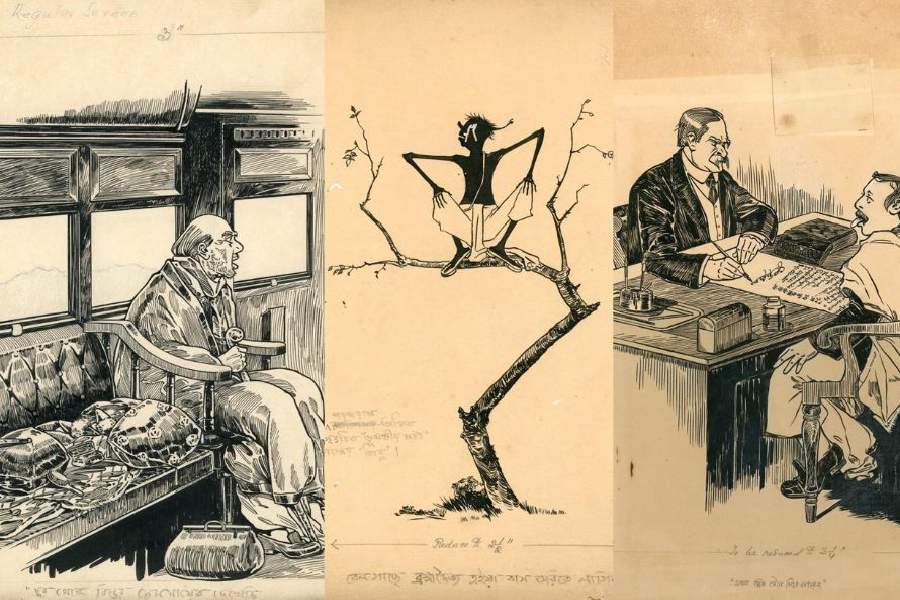What Parashuram — the pen name of Rajshekhar Basu (1880-1960) — achieved with his mordant wit and excoriating sarcasm, his illustrator, Jatindrakumar Sen (1882-1966), pulled off with his sharp and hilarious drawings which held up a mirror to Bengali society’s many flaws and imperfections. Curated by the sculptor, K.S. Radhakrishnan, these original drawings and caricatures, some of which were modelled on Parashuram’s own preliminary pencil sketches, were displayed at a recent exhibition titled Vision & Visuals: Jatindrakumar Sen’s Illustrations for Parashuram’s Stories at Arthshila in Syambati, Santiniketan. These were in the possession of Parashuram’s great-grandson, Dipankar Basu, and they were rescued from perdition by the collector and archivist, Parimal Ray.
Sen, who was a pioneer of commercial art, was born in Chandannagar and was raised in Darbhanga, Bihar. He was trained at the Government Art School in Calcutta and enjoyed a close relationship with Rajshekhar Basu. About 150 drawings were on display and they included Sen’s illustrations and titles of the first three of Rajshekhar Basu’s nine storybooks.
Like most artists of that age, academic realism was Sen’s forte. It was the legacy of colonial rule. But he subverted that style by deploying it to create some of the most risible characters in Bengali literature caught in absurd situations. As in the case of many other humourists, some of it would be considered politically incorrect at a time when we ‘cancel’ whatever we can’t stomach.
The dhotied and turbaned porcine man belonging to the so-called business community who becomes a symbol of corruption; the Odia constable from the topsy-turvy world of Ulot Puran where the Indian government has colonised England; termagants who terrorise meek males; the timid Bengali gent smothered in an ulster, muffler and cap in a damp Darjeeling; the niminy-piminy young man — these are some of the unforgettable characters Jatin Sen had fleshed out. He will be remembered forever for the ghosts who were the disembodied habitués of “Bhushandir Mathe” (picture, middle).










